Whether you want to become a full-time farmer or just earn a little money on the side, a market garden is a fantastic way to start profiting from your passion.
In this article, I’ll break down the basic steps you need to start your own market garden, regardless of what your starting point is. I’ll teach you how to decide what to grow, where to grow it, how much of it you should grow, and how to market and sell it. All it takes is a bit of creativity and a good amount of manual labor.
Turning your green thumb into cold hard cash isn’t as hard or intimidating of a process as you might think. It also doesn’t require expensive equipment, acres of land, or a formal education. And the money is just part of the satisfaction that comes from starting a market garden. You’ll also be doing what you love.
What Is Market Gardening?
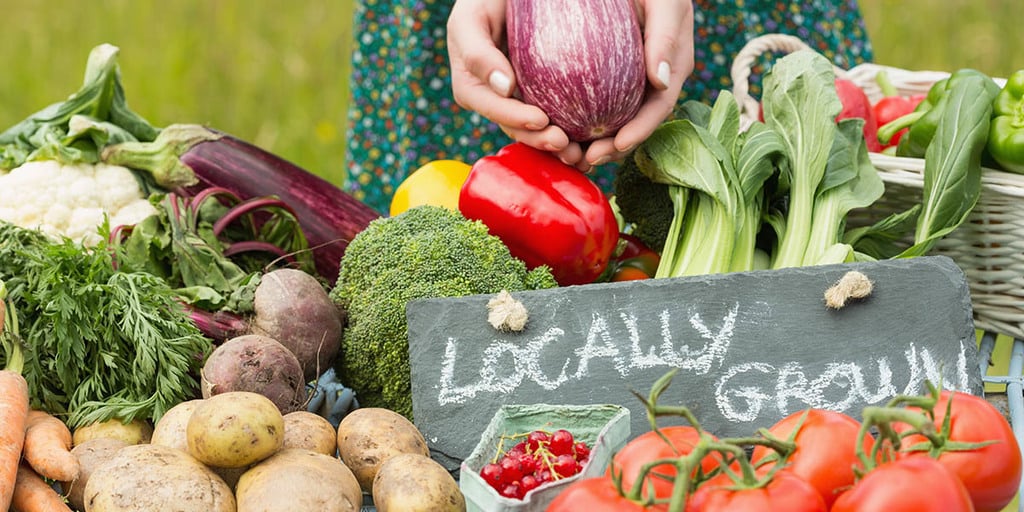
A market garden is a relatively small operation, usually under one acre, used for the small-scale production of vegetables, flowers, and fruits as cash crops.
Typically, a market garden will grow a diverse variety of crops as opposed to a monoculture. A market gardener often sells their crops directly to customers, restaurants, and shops.
Market gardens rely more on manual labor and gardening techniques than the big pieces of equipment used for large-scale agriculture.
Even though market gardens operate at a small scale, they’re able to earn a good amount of money.
Farmers who sell to the wholesale market usually only get about 10 to 20% of the retail price for their crops. But since market gardeners can sell direct to consumers, they can earn 100% without a wholesaler or distributor taking a cut.
Conventional farms can return as little as a few hundred dollars per acre, but market gardens are highly efficient and can return tens of thousands of dollars in the same amount of space.
Although, because of its highly manual nature and the maximum number of local customers it can reach, there is a practical limit to how large a market garden can be.
How To Start A Market Garden (Step By Step)
Starting your first market garden can seem quite intimidating. But it doesn’t have to be so difficult, as long as you break it down into smaller steps.
1. Do Your Research
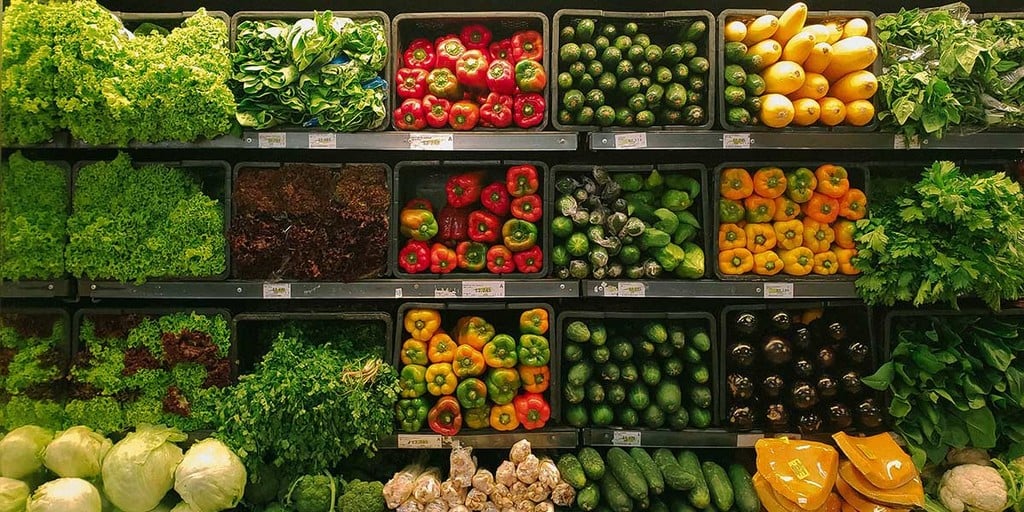
Before you ever start buying any seeds or starting to lay out your garden, you need to do a lot of market research first.
You can grow the best red cabbages in your area. But if nobody is looking to buy red cabbages, then there’s no point in growing them.
It might be worth working on another farm before you decide if you really want to start one of your own. That way you’ll get to experience a lot of the day-to-day tasks that you’ll need to do once you start.
You might end up loving it, but a lot of people also have romanticized ideas about what working on a farm is like. Sometimes they end up not actually having that much fun once they try it.
It’s better to find out early on if farming isn’t for you, rather than investing in a market garden of your own first.
Working for someone else will also give you an idea of what works and what doesn’t, what equipment you like and don’t like, and other details that you can’t pick up without direct experience.
Check out farmer’s markets to see what products are already being sold. If one or two vendors already has the same product you want to sell, it’s not necessarily cause for panic.
Especially if you think you can produce a better product, or make it cheaper. But if the market seems oversaturated with a particular produce, you might not want to pick something with so much competition.
If you do pick something other people are selling, find a way to differentiate yourself. If someone is already selling regular carrots, you can sell purple carrots.
If they’re selling sunflower microgreens, there’s still room to sell radish microgreens or pea shoots instead.
2. Find Some Land
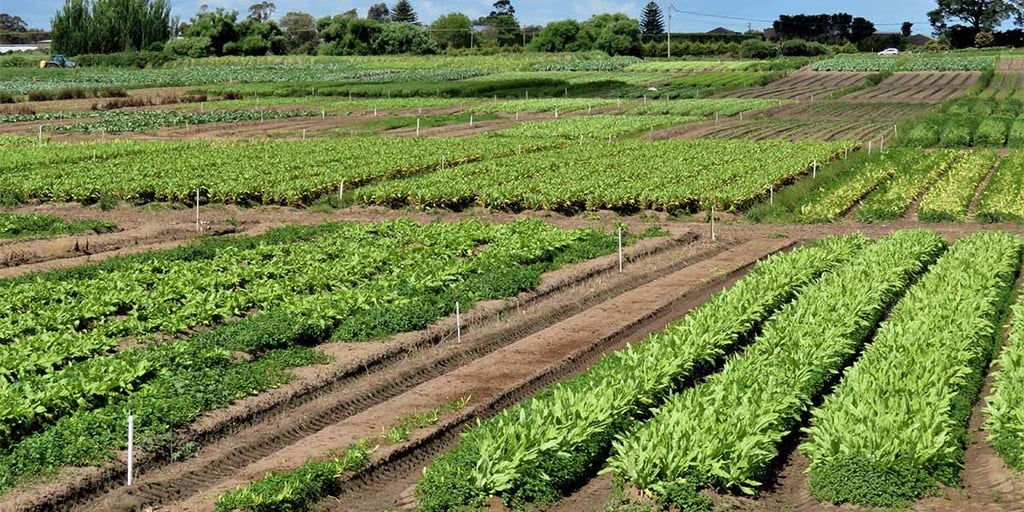
You’ll need a permanent (or at least long-term) plot of land to set your market garden up on.
Ideally you want somewhere for more than just one season, since you’ll need to put a lot of initial work into getting it ready for growing.
This can be an empty lot, someone’s backyard they’re willing to lease to you, or any other land you can find.
This is the first major hurdle you’ll face in starting your market garden, and the first big decision that you make. So take some time and don’t necessarily feel like you need to jump on the first piece of land that you come across.
There are a lot of factors to consider when you’re evaluating a potential piece of land. Like how much it will cost you, what the land is currently designed for, whether you have access to water, and other things.
But one thing that I think is especially important is proximity to where you live.
During the summer you’ll need to travel to your market garden on a daily basis, so try to find a location that’s 10 or 15 minutes away, or even less if possible.
A piece of land 30 minutes or more away is probably a dealbreaker, as it’s a big barrier to actually getting there and consistently putting in the work needed to make the project a success.
If you’re planning to just grow mushrooms or microgreens, you won’t necessarily be looking for an open plot of land, but you’ll still need to locate and acquire a place to grow your crops, even if it’s indoors.
That might be your basement, leasing an unused section of a factory, or getting a shipping container.
- Learn How To Start a Homestead, how to find the perfect land for growing plants, and which skills you need to grow your farm.
3. Plan Your Crops and Production

You need to know what you’re going to grow before you can start work on your land, since the crops you’re planning to grow will determine row spacing and other factors.
Based on your initial research into market gardening, you should already have a good idea of what produce is likely to be popular and sell well in your area.
A big part of this step is also planning out your production schedule and when various produce will be ready for sale.
In a home garden, people usually just plant vegetables they like, and eat them whenever they become ripe.
But as a market gardener, you have restaurants, shops, and other customers who are counting on you to be their supplier. They need you to deliver a successful product, week after week.
You’ll need to use succession planting to ensure new crops are ripening constantly every week.
Usually it’s good to estimate how much you think you’ll sell at any given date, then work backward to figure out when and how much you need to plant to hit that goal.
Having a bit of variation and occasionally running out of things is going to be normal in your first year.
But avoid it as much as possible, since if it’s happening consistently you’ll miss out on sales and potentially lose repeat customers.
4. Prepare Your Soil
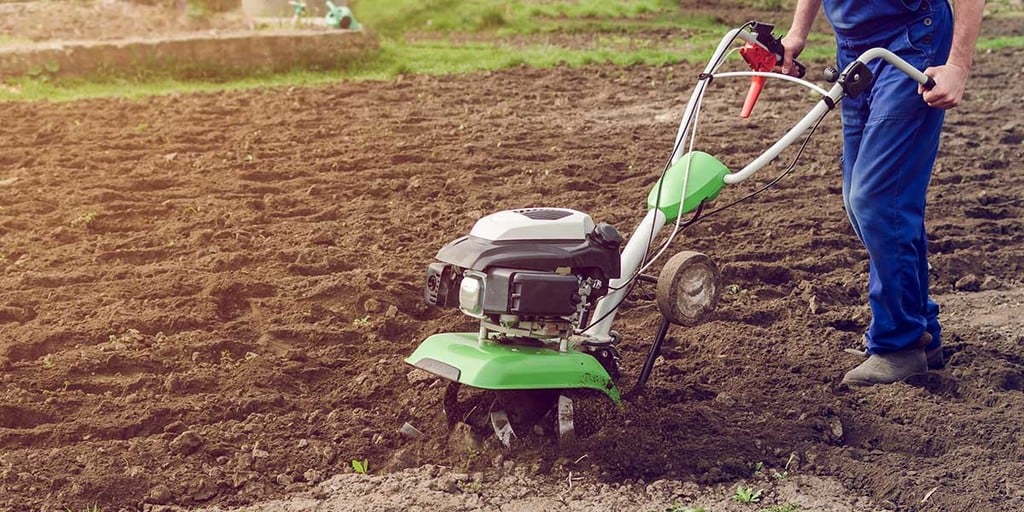
Once you’re sure what you want to plant, you can start preparing your soil. Ideally if you’re planning in advance, you can start to prepare your soil the year prior.
Things like covering the ground with a tarp in the fall and spring to kill off weeds will make your life a lot easier later on. If you’re using no-dig permaculture methods like sheet mulching, it’s best to do that in the fall.
That way things will have time to decay over the winter before you start to plant in the spring.
- Read more of How To Start A Permaculture Garden or Complete Guide To Online Permaculture Design Courses to know more about growing food at own.
A lot of market gardeners will rent a rototiller in their first year to help really loosen the soil, break up any existing roots, and mix in amendments to improve soil quality.
It’ll cost you $50 to $100 to rent a tiller for the day, but trust me, it will make your life a lot easier. Of course if you want a strictly no-dig market garden, you can skip this step.
Just be sure to have any underground power cables, telephone lines, or other hazards marked out before you dig. In most places, you just need to call and utility companies will come out and do this free of charge.
5. Plant Your Crops
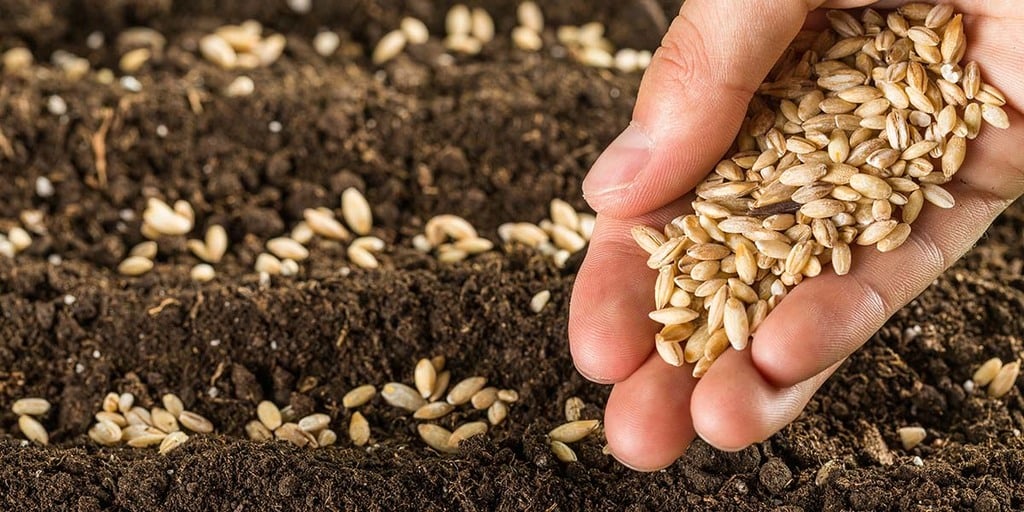
Your land is all ready, now it’s time to plant your crops. You can either plant seeds or start with seedlings. But if you’re planning to use seedlings, I recommend setting up a small nursery to grow them yourself ahead of time.
If you buy seedlings from a nursery or garden center, things can get cost-prohibitive pretty quickly.
Keep your plans in mind and figure out how you will lay out your successional sowing, as well as when and where you’ll do crop rotations throughout the season or between seasons.
If you’re willing to invest in some equipment, using a mechanical seeder or paper pot transplanter can drastically reduce the amount of time it takes you to plant.
These pieces of equipment quickly and accurately plant in evenly-spaced rows, and can turn what’s normally hours of work into just minutes. You can find such equipment on https://paperpot.co/.
6. Maintaining Your Crops

Once your plants are in the ground, you need to keep them alive and thriving until they’re mature.
Water them and weed regularly. If plants are getting burned in the middle of summer, you might need to bring in some shade cloth.
Check thoroughly for bugs or disease every few days. If you catch it early, it will be a lot easier to deal with, before it affects your whole garden.
7. Harvesting
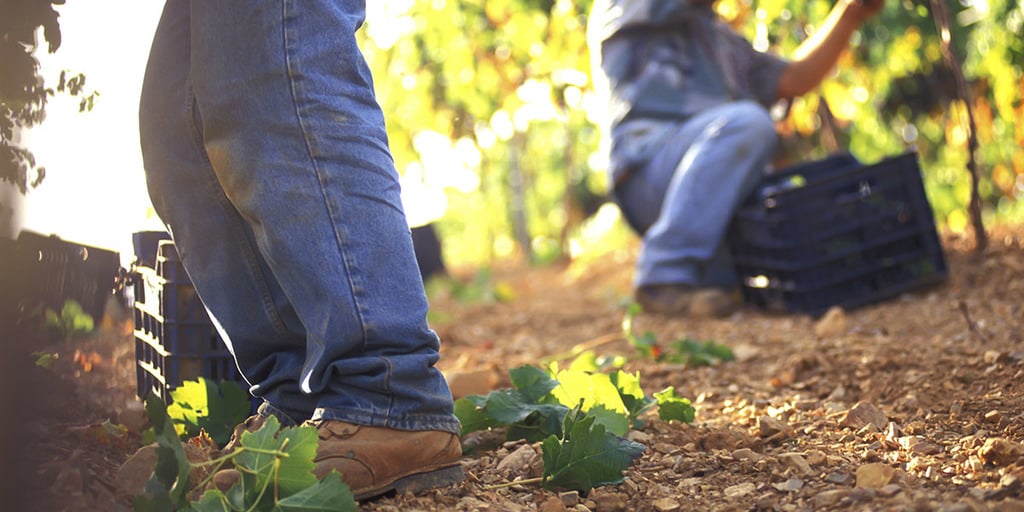
If your crops made it to maturity and fully developed, then most of the hard part is done. But harvesting is still a very time and labor-intensive process that needs to be completed before you can take your goods to market.
I recommend finding the most efficient way to harvest, and take advantage of any special tools that you have at your disposal.
Even if it costs a couple hundred dollars to buy a specialized harvest tool, it could save you a huge number of hours in the long run, as well as potentially saving a ton of strain on your knees and back.
8. Cleaning and Storage
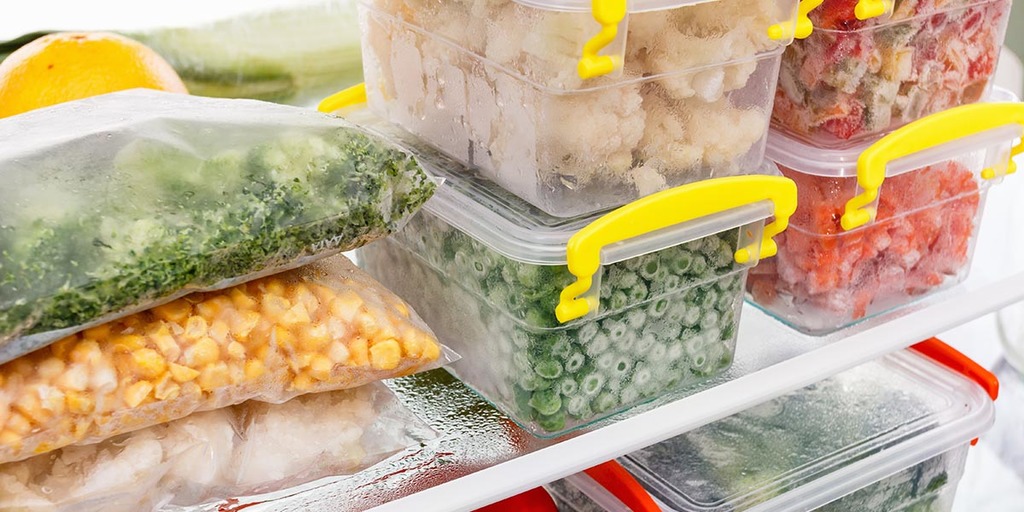
The next step after harvesting the bounty of your market garden is to wash and pack it for storage.
You’ll want a large sink and hose to clean produce off with, or potentially even make yourself a bubbler depending on what your production size is like.
You might also want to make a salad spinner out of an old washing machine to streamline the process as well. Jean-Martin Fortier has guides on how to make all of the wash shed equipment you’ll need here.
After your produce is clean, you’ll want a way to keep it refrigerated until it’s time to deliver it to customers. This will greatly extend the life of your produce and is a must-have, especially in the summer months.
There are plenty of great guides on Youtube for how to cheaply make a DIY walk-in cooler.
9. Selling / Delivering Produce

Ideally you’ve been making some connections with chefs, small shops, and other potential customers during slow periods in your market garden. That way you’ll have customers ready to buy your produce as soon as it’s ready.
You should also plan in advance to book a spot at your local farmer’s market as well.
When you’re just starting out, you can load up whatever vehicle you currently own with produce and take it out for deliveries.
But once you’ve earned a bit of money and your business is starting to scale up, you’ll want to invest in a cube van. Preferably something climate controlled for those delivery runs that take several hours to complete.
10. Learn From Experience
If you’ve managed to pull off a successful season, congrats! You likely faced lots of challenges along the way. So take some time when you’re planning and preparing to learn from the lessons of the past.
- What worked really well for you?
- What could you have done better?
- What held you back or took up a disproportionate amount of your time and effort?
What Kind of Crops Are Grown In A Market Garden?
It’s best for market gardeners to try and find in-demand products that fetch a high price and are currently under-served in the local market.
Although pretty much any crop can be grown. It’s best to avoid crops like corn and wheat though, which large farms are already supplying lots of at low prices.
Of course it will depend on your local area. The name “market garden” gives a good clue that you should be listening to what your market is asking for, and then supply that.
But here are some of my top picks for crops that I think market gardeners should grow.
1) Salad Mixes
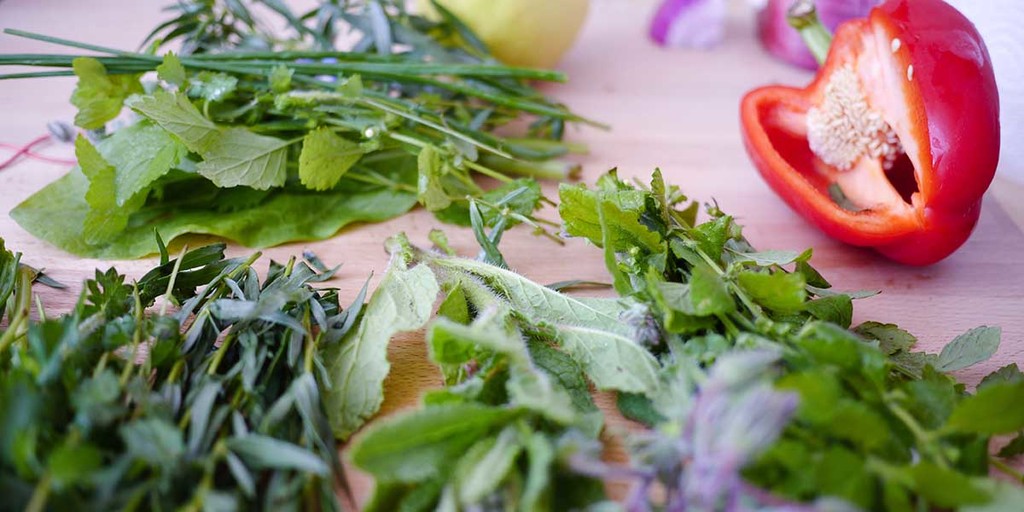
Pretty much any leafy greens like arugula (rocket), kale, spinach, swiss chard, and others are great crops to grow in a market garden.
You can sell them individually, or make various different types of salad mixes that you can market for farmer’s markets and other places where you can sell direct to consumers.
If you’re also growing microgreens, you can mix them in to your salad mixes as well.
Since leafy vegetables are so nutritious but also have a short life, there’s a big market for fresh greens. They will only become more popular as the number of health-conscious shoppers increases.
There are plenty of profitable crops that you could grow on your small farm. Learn which are the most profitable here.
2) Mushrooms
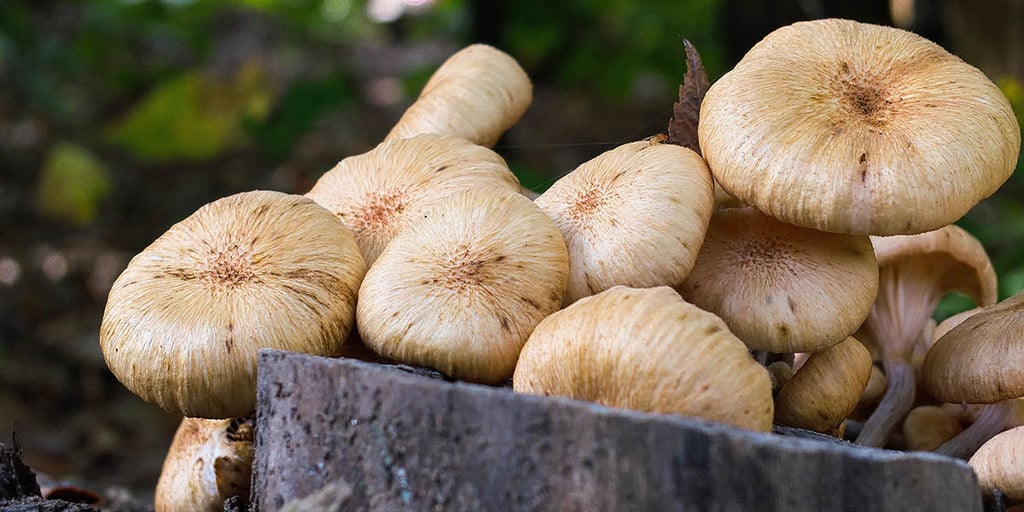
Edible and gourmet mushrooms are an awesome crop for market gardeners and urban farmers. They can be grown indoors year-round, so you don’t need to worry about weather cycles or changes in how you grow.
Mushrooms produce a very high amount of revenue per square foot.
The two most popular mushrooms for market gardeners to grow are oyster and shiitake. Oyster mushrooms specifically are very profitable.
You can grow about 25 pounds of mushrooms in a square foot each year. If you’re selling them for $8 per pound and grow a 10×10 area worth, that’s $20,000 per year.
If you’re thinking of growing mushrooms, I would avoid growing button, cremini, or portobello mushrooms.
There is already a lot of competition from industrial growers who sell these in practically every grocery store, so stick to other popular varieties.
- Learn what types of mushrooms to grow, and how to grow them in this Ultimate Guide: How To Grow Mushrooms.
3) Microgreens
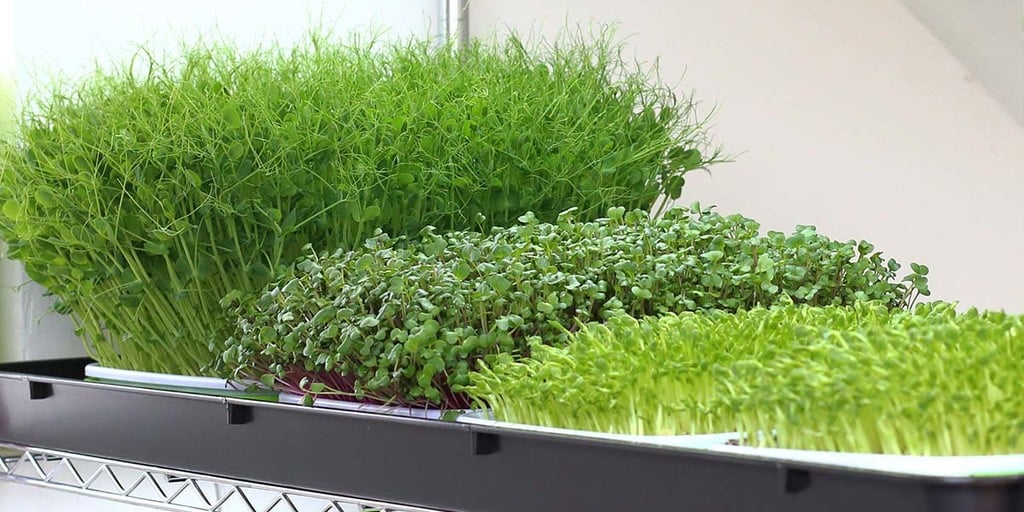
Microgreens are the seedlings of a variety of vegetables like peas, sunflowers, and radishes that are harvested at around 7 to 14 days.
These little sprouts are packed full of nutrition and flavor, and make a great addition to a salad or smoothie.
Microgreens are like mushrooms, in that you can grow them completely indoors year-round in quite a small space.
To start growing microgreens you’ll need some trays, soil, fluorescent lights, and shelving or racks to hold them all.
Or if you’ve got a greenhouse, you can experiment with trying to grow a few flats of microgreens at a time in there.
- Read more about microgreens business and how to grow microgreens for profit.
4) Herbs
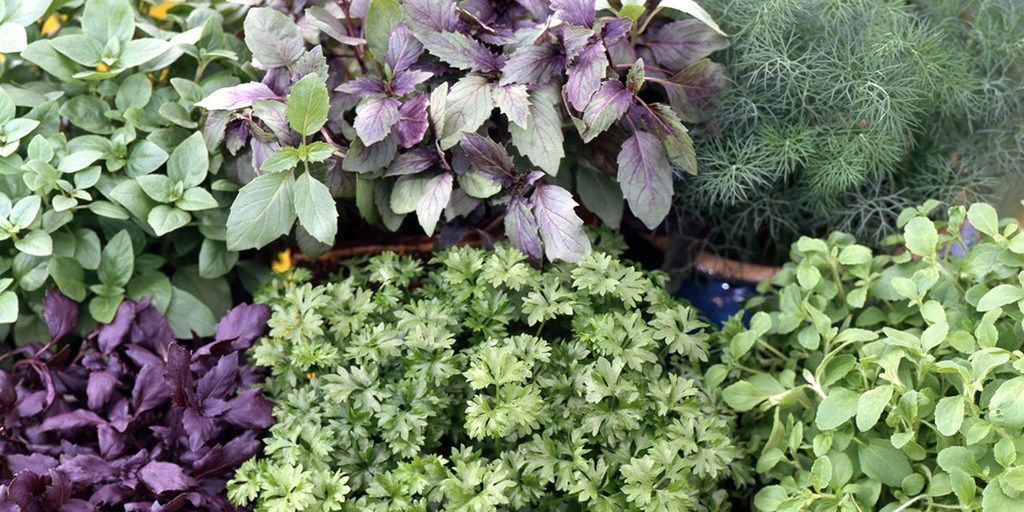
Fresh culinary herbs have seen a big increase in demand, both from restaurants as well as home cooks. Herbs of all types also come with big price tags, often just a small bunch of them can be sold for several dollars.
You can try growing any number of popular herbs like basil, cilantro, rosemary, chives, oregano, mint, parsley, thyme, and sage. Many of these are hardy plants that grow and spread quickly.
You can use herbs to create your own line of value-added products like bath oils, teas, soaps, and candles. Dried herbs also sell surprisingly well at farmers markets.
For a unique product to sell, try making small “instant” herb gardens that people can take home and grow on their kitchen windowsill. Combine a couple popular herbs so people can cut them as-needed for their cooking.
5) Lavender
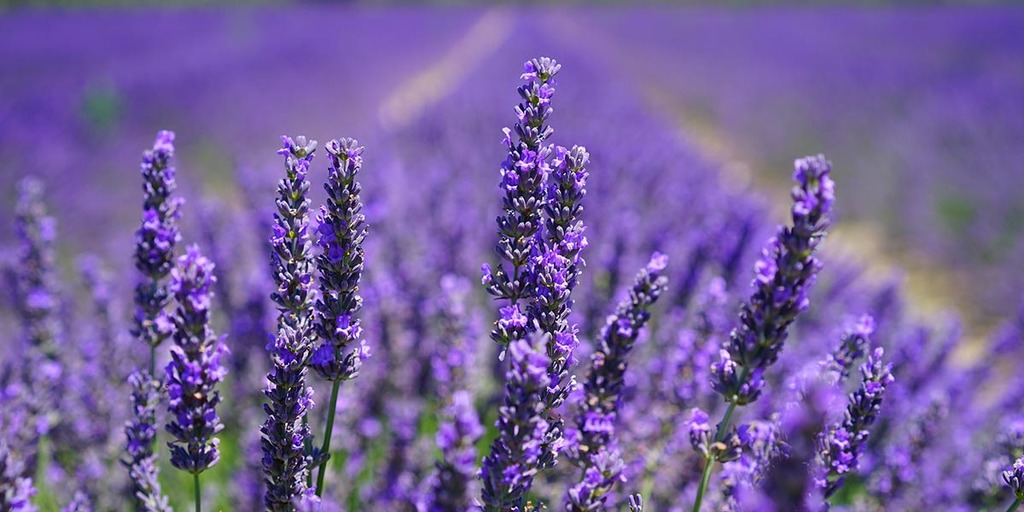
Lavender is another crop that can produce high amounts of profits from a small area. It’s also very versatile, and there are a lot of different avenues for selling it.
You can sell fresh or dried flowers to florists and crafters. You can even make your own lavender oil.
Or you can sell it to local companies to turn it into a variety of value-added products like soap, skincare, and aromatherapy products.
- You can also grow fruit trees and make money on them, learn more about How To Create A Permaculture Orchard here.
Where Do Market Gardens Sell Their Goods?
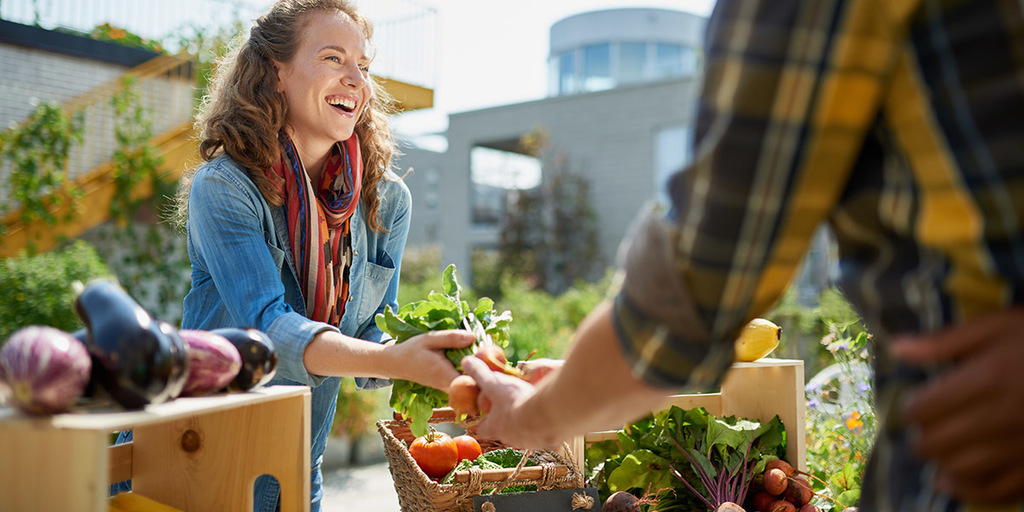
A well-run market garden will have a wide range of fresh produce available in a steady supply all throughout the growing season.
The more diverse of a set of clientele you can establish for yourself, the lower the risk will be to your business.
If you’re selling through multiple different channels, then it’s not a big deal if one restaurant suddenly decides that it doesn’t want to order from you any more.
Whereas if you set yourself up so that all of your produce is being sold to one grocery store and they change their mind, you’ll be in a very difficult position to recover from.
Here are some of the different ways that you can try to sell your products. I recommend trying out as many as possible early on, and see what works.
If you have lots of success with one or two of them, you can double your efforts in those areas and avoid ones that seem to be taking up too much time or aren’t driving enough business.
Farm Stands

One of the easiest ways to sell your produce is simply to set up a stand outside of your farm.
If you live in a decent area, you can use the trust system and simply leave your produce out along with a sign saying something like “1 basket of tomatoes, $5” and a lockbox where people can drop off their money.
Most people are honest and will abide by this system. The best part is that it doesn’t require you to stand there all day like at the farmer’s market to make sales, it’s a passive system.
And since it’s located right outside of your farm, you save time having to transport the produce across town.
Depending on what you’re growing and the time of year, you may want to store your goods in the shade or even set up a refrigerator with a glass front to keep your produce cool and prevent spoilage.
Farmer’s Markets
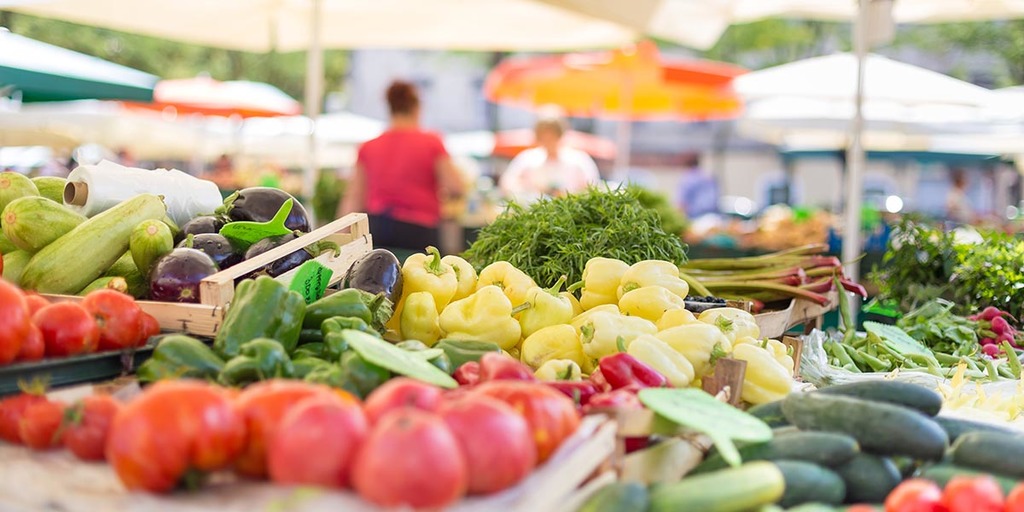
Farmer’s markets are a great place to sell your products. For a small fee, usually $20 per week or around $500 for a six month season, you get access to hundreds of your ideal customers every time that you set up.
People who shop at farmer’s markets value fresh, sustainably-farmed, local food and are willing to pay a premium for it. The downside of farmer’s markets is that they are a very active process.
You’ll need to stand there yourself all afternoon to make sales, hire someone, or get a family member or friend to help you out.
There’s also a lot of time involved with preparing all the things you need to take to the market, setting up when you get there, and then taking everything down again at the end.
Still, the amount you earn will most likely make the time worthwhile, and most market gardeners get their start selling at the farmer’s market.
Restaurants
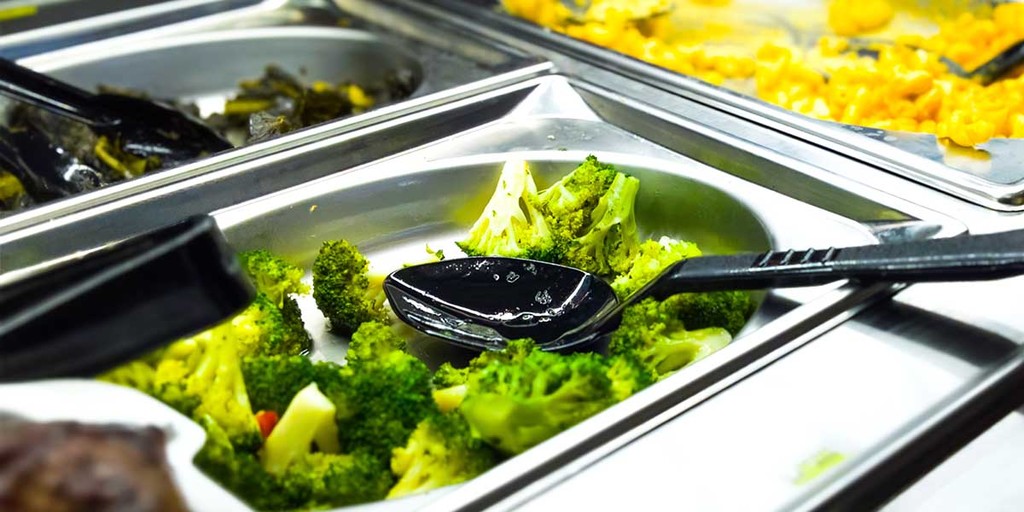
Chefs put a high value on fresh, flavorful items that look great on the plate. They’re willing to try more trendy new produce that people at the farmer’s market might be unsure about, but they’ll also buy lots of the staples as well.
Restaurants will pay a little lower prices than individual customers would, but they also buy in much larger quantities.
The best part of selling to restaurants is that they’re repeat customers. Once you get your foot in the door, if they enjoy your product they’ll most likely keep buying from you week after week.
Reach out to higher-end restaurants in your area and ask if you can meet with the chef to talk about supplying them with fresh ingredients. Bring along samples when you visit restaurants is a must.
Tasting your crops for themselves will sell your product better than anything you could say.
Don’t be afraid to bring a whole box of products for them to try and test out in dishes. If they end up buying from you, you’ll more than recover the expense.
Along with the produce, include a fresh sheet they can keep which includes your contact information, as well as what you’re offering and what your prices are. List what days of the week you will do deliveries as well.
Independent / Local Food Stores
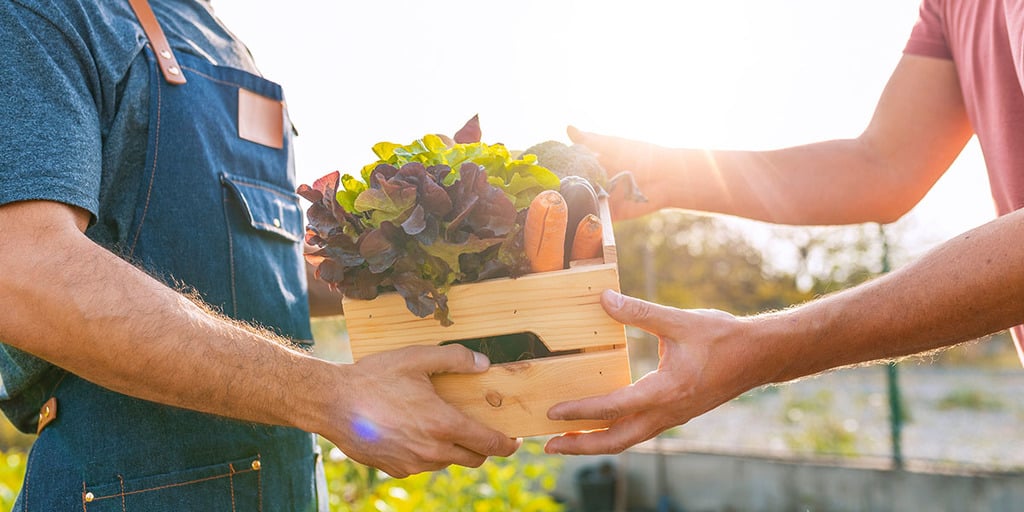
The chances of you getting a deal with a large national grocery chain are slim, they often have teams of buyers and find suppliers on their own terms.
You also probably don’t have the production capacity necessary to supply them with enough product if you’re just getting started.
But local or independently-run grocery stores and produce outlets will definitely talk to you and be willing to sell your produce.
Go in and speak with the store manager and/or produce manager, and take the same approach as with restaurants.
Give them samples of your produce to try, and give them a sheet to let them know what your prices are and what days you can deliver.
Just like restaurants, getting in at shops can provide a huge amount of repeat business for you. As long as customers like your products and they’re buying it, the store will keep ordering more.
Small stores won’t squeeze you down to the same prices as wholesalers will, but expect to earn significantly less per pound than you would selling at a farmer’s market.

While you’re selling at the farmer’s market and other locations where you interact with individual customers, you should be trying to collect email addresses and getting people to sign up for an email list.
That way you can let people know when you’ll be at the market, what produce will be available that week, and also give customers a chance to contact you and let you know what kinds of products they want to buy in the future.
Once you establish a bit of a following and some credibility in your community, you can use your followers to start a CSA or veg box subscription program.
For a set fee, people can get a box of an assortment of fresh vegetables delivered fresh to their home each week.
Offering boxes gives you a lot of flexibility and a way to offload products that perhaps you planned to sell to restaurants or shops, but grew way too much of.
As well as including some staple favorites like lettuce, tomatoes, and carrots each week.
The big downside to this approach is that you’ll have to spend a lot of time delivering your products to individual customer’s homes each week.
If you’ve got a few dozen subscriptions, it might take you a whole afternoon to make all of your deliveries every week.
But on the bright side, you’ll have a steady amount of orders that you can plan around, and you can set customers up on direct debit so their payments will automatically come out each week unless they cancel.
Wholesalers, Food Cooperatives, and Other High-Volume Channels
Like I mentioned earlier, you probably don’t want to sell to wholesalers as a main part of your sales strategy, because they will only pay you 10 or 20 cents on every dollar that you could get from other sales channels.
But it’s still good to establish connections, because in a pinch they’ll usually be willing to buy any surplus you do find yourself holding on to.
It’s better to at least get some money back if you have no other way to sell your products, rather than let it go to waste.
Examples of Well Known Market Gardeners
1. Jean-Martin Fortier
JM Fortier is a market gardener from Quebec, Canada. He has founded two market gardens, Les Jardins de la Grelinette and La Ferme des Quatre Temps. He is considered a real pioneer in the market gardening space.
He’s also an author and advocate for economically-viable sustainable agriculture.
I highly recommend checking out the two links above to get inspired as to what a market garden can be.
2. Richard Perkins
Richard Perkins is an innovative farmer who has been growing food since he was a teenager. He’s designed farm projects in every major climate zone in the world, on multiple continents.
You can check out his work on http://www.ridgedalepermaculture.com/.
3. Charles Dowding
Charles is the leading authority on no dig gardening. He has been sharing and exploring new ways to garden since the early 80s.
He has written nine books on organic and no dig gardening methods, runs a YouTube channel, and teaches courses around the world.
Learn more at https://charlesdowding.co.uk/
Conclusion
A market garden is a physically demanding, but also very rewarding business to run.
After reading this article, you should now know how to start a market garden of your own, step by step. Including researching, finding land, planning your crops, planting, harvesting, etc.
We also discussed some popular crops for market gardens that are profitable and don’t require a huge amount of space. Consider crops like gourmet mushrooms, microgreens, herbs, and salad mixes.
For more on beginner gardening, check out our article on how to start a milk crate garden.
